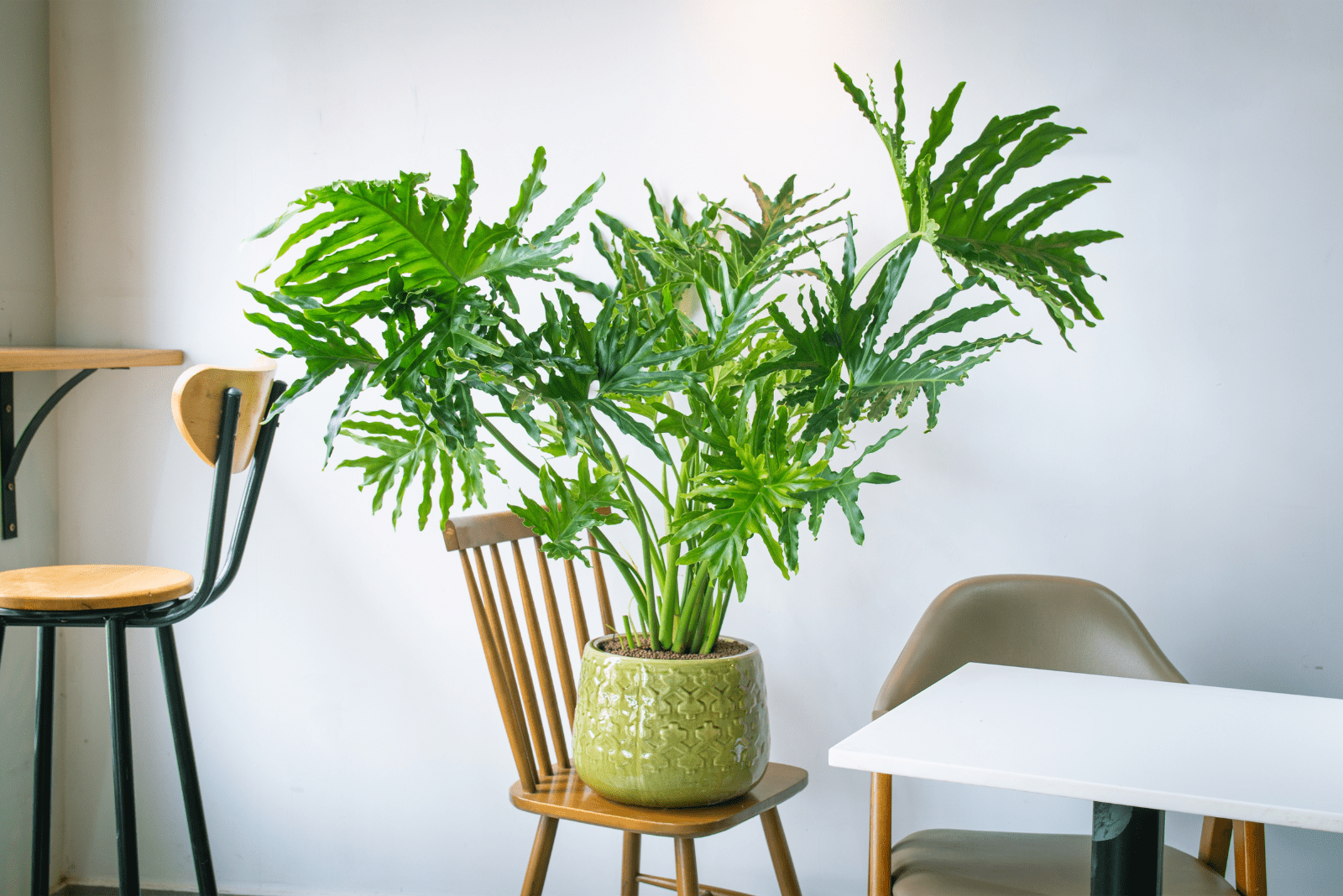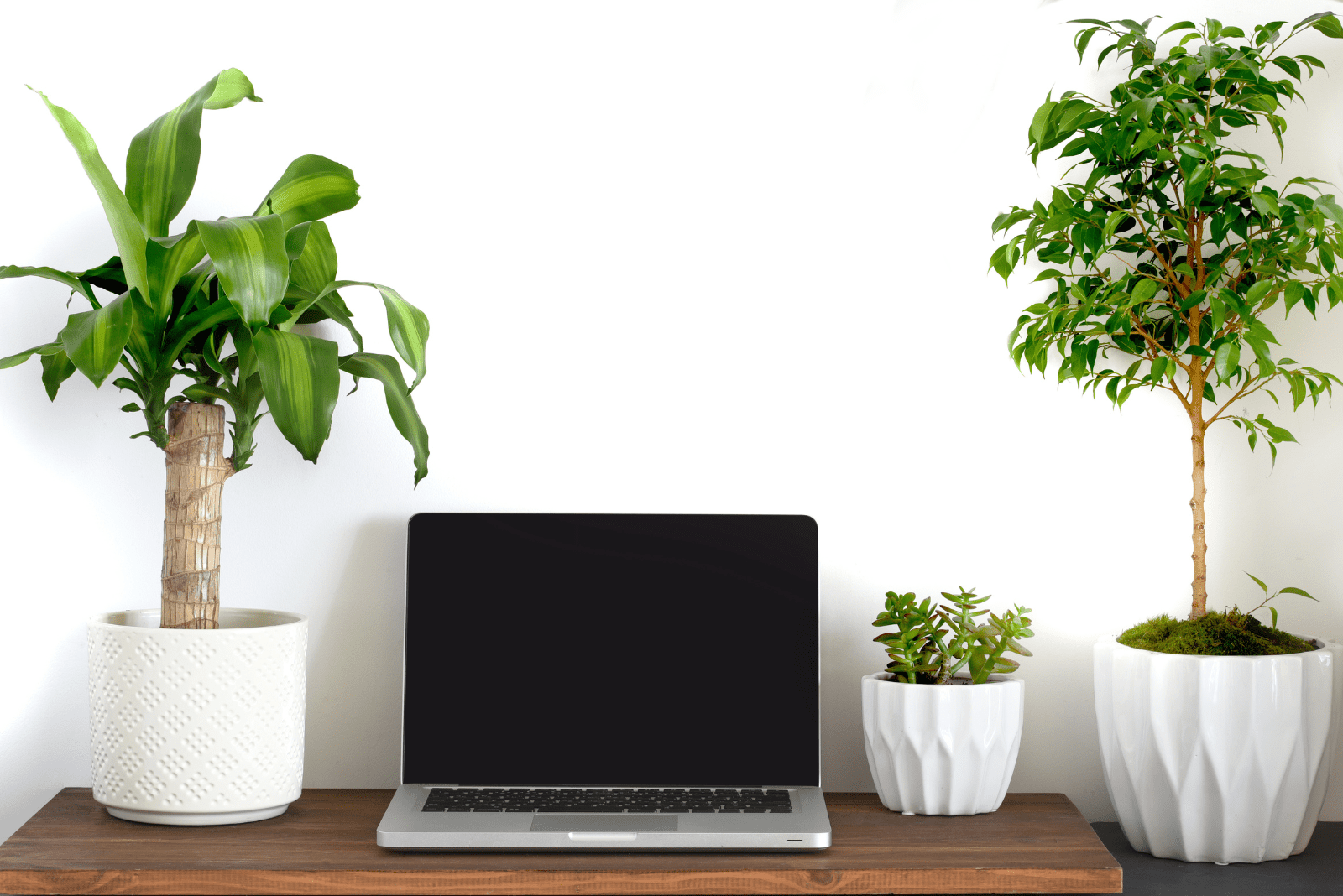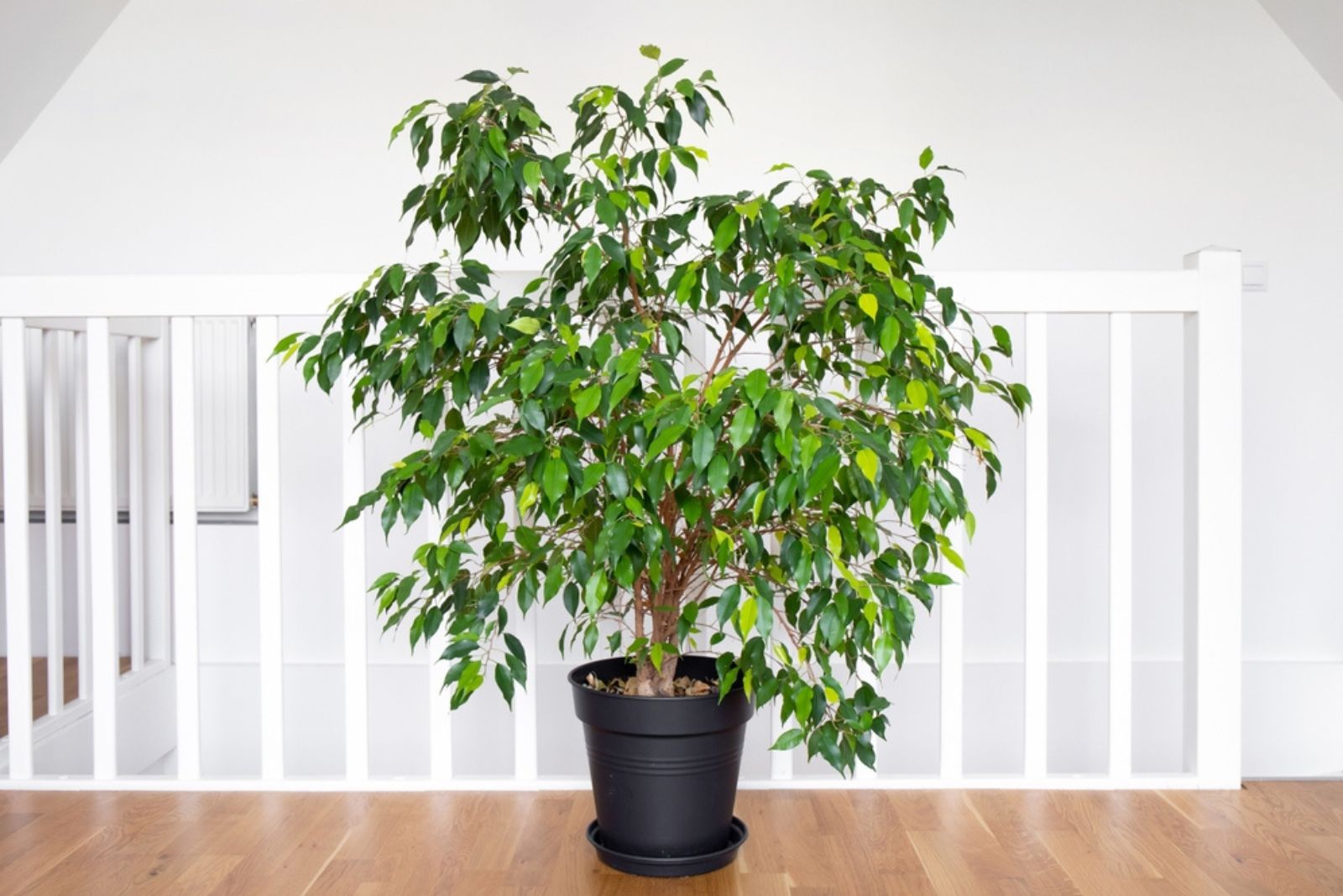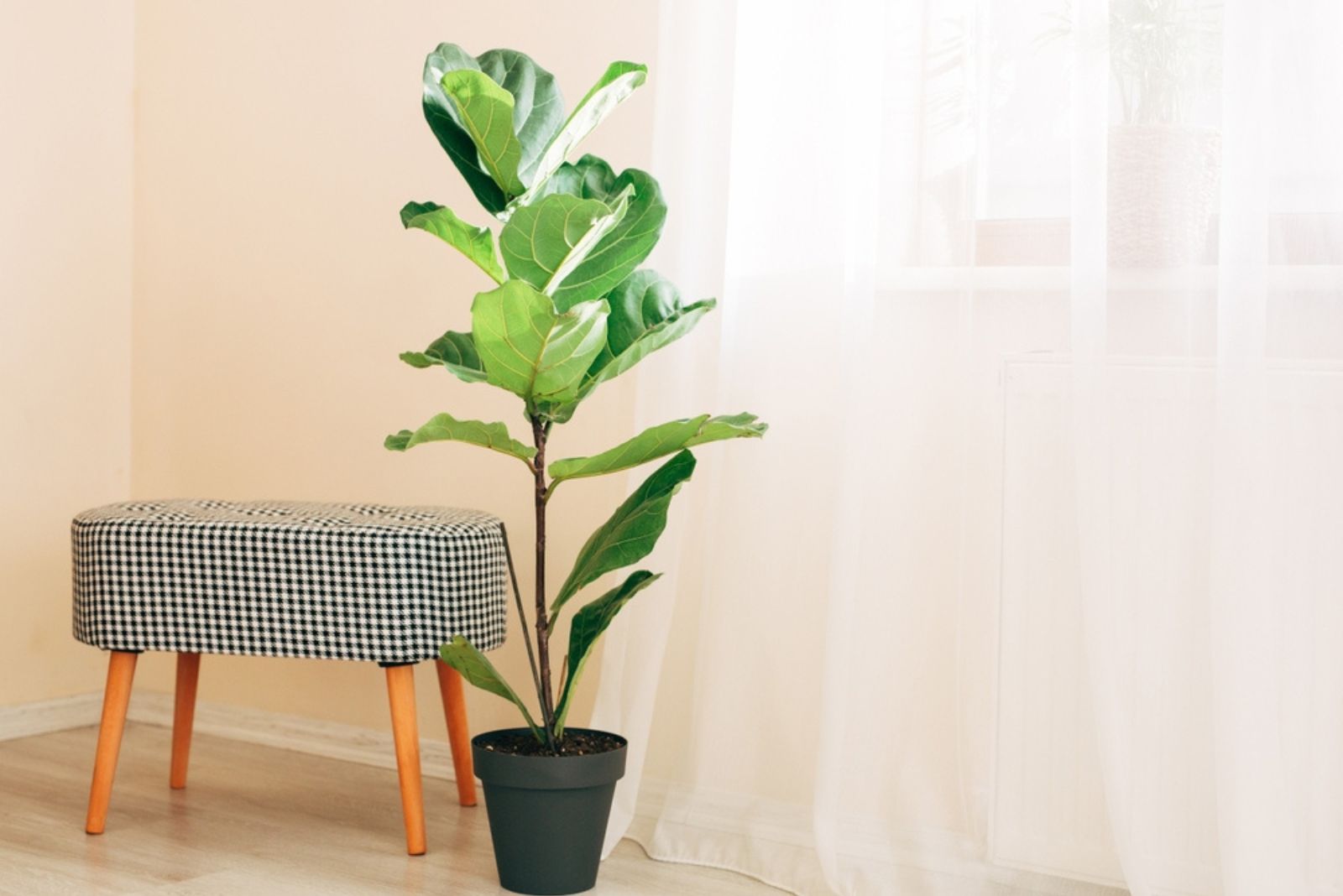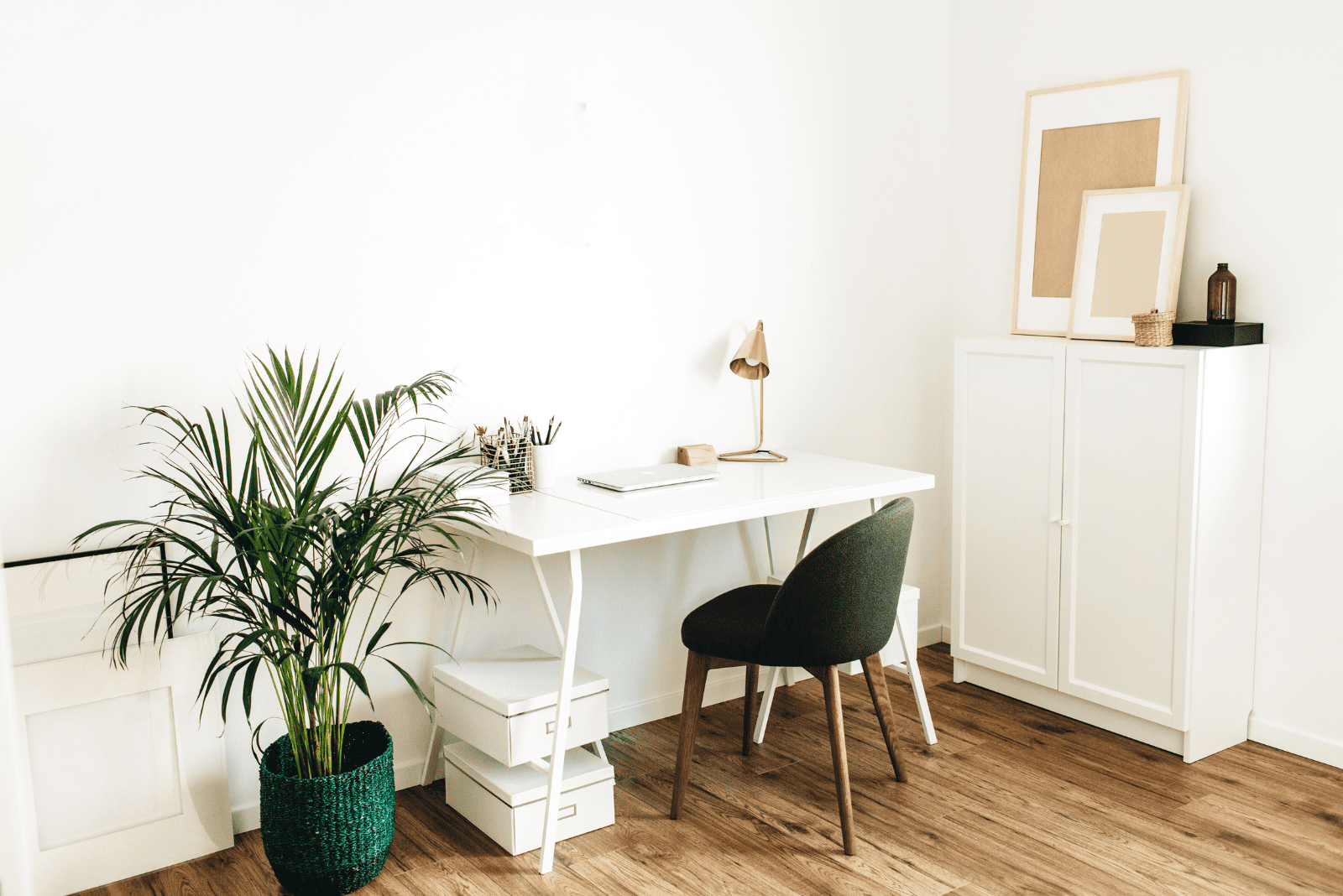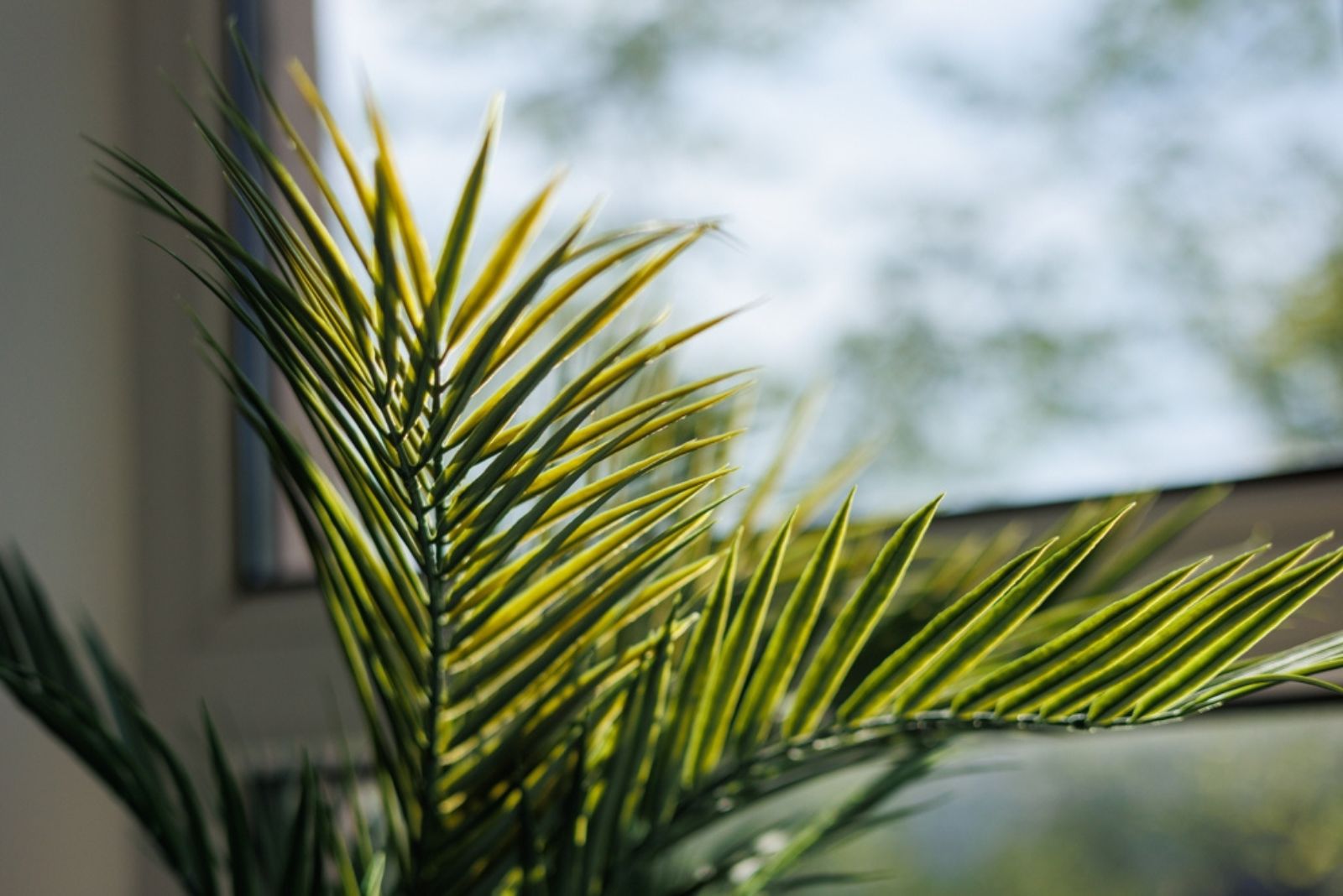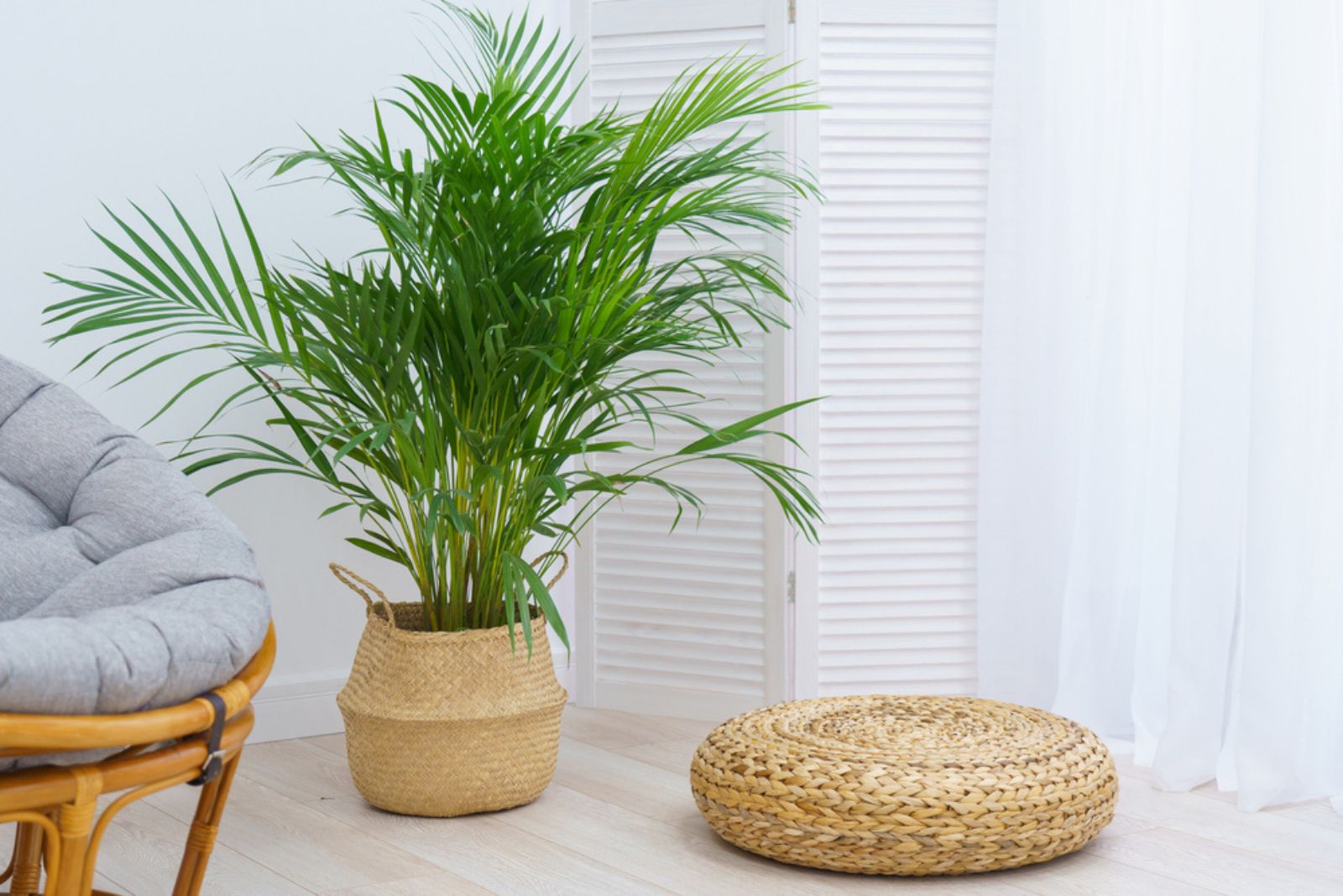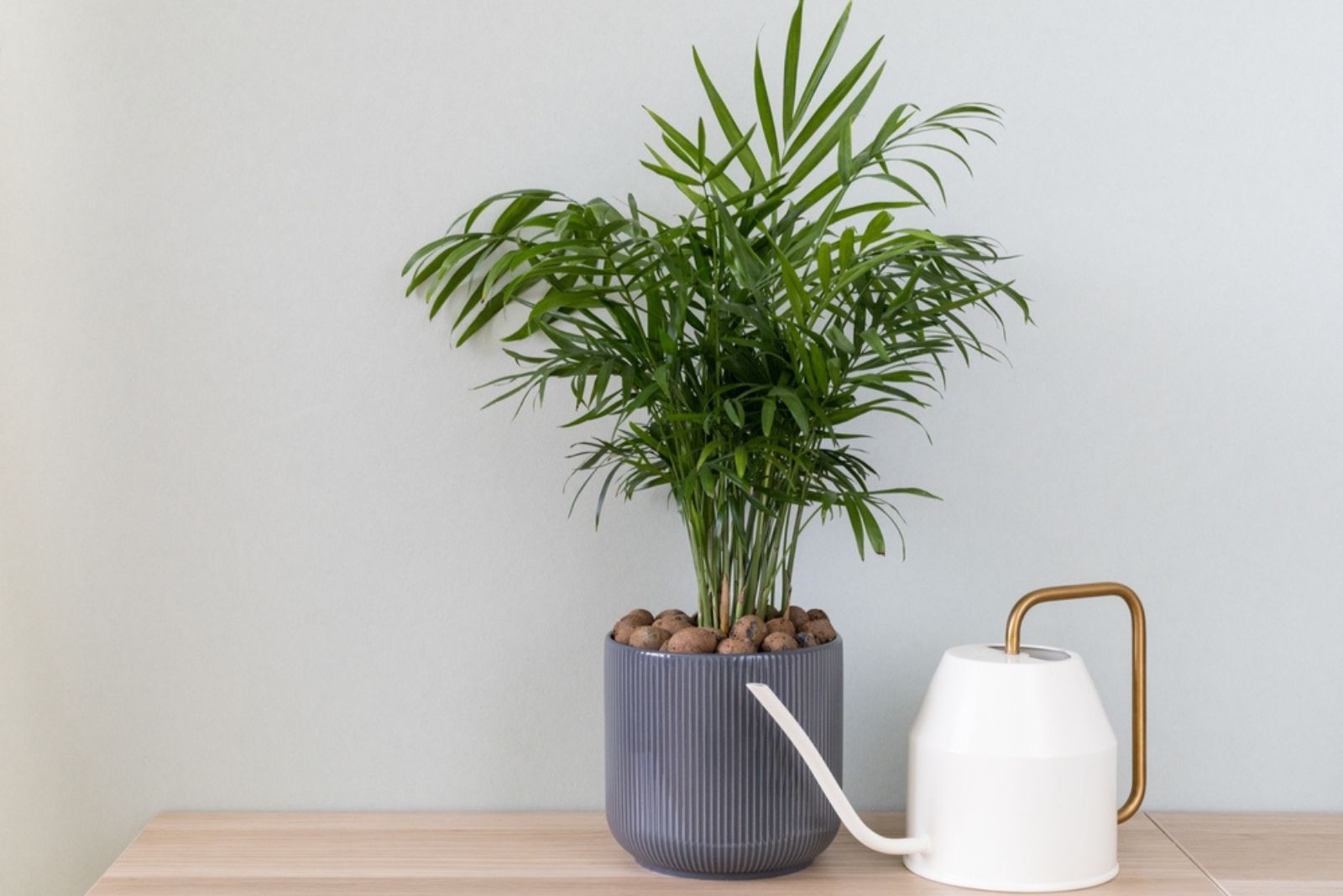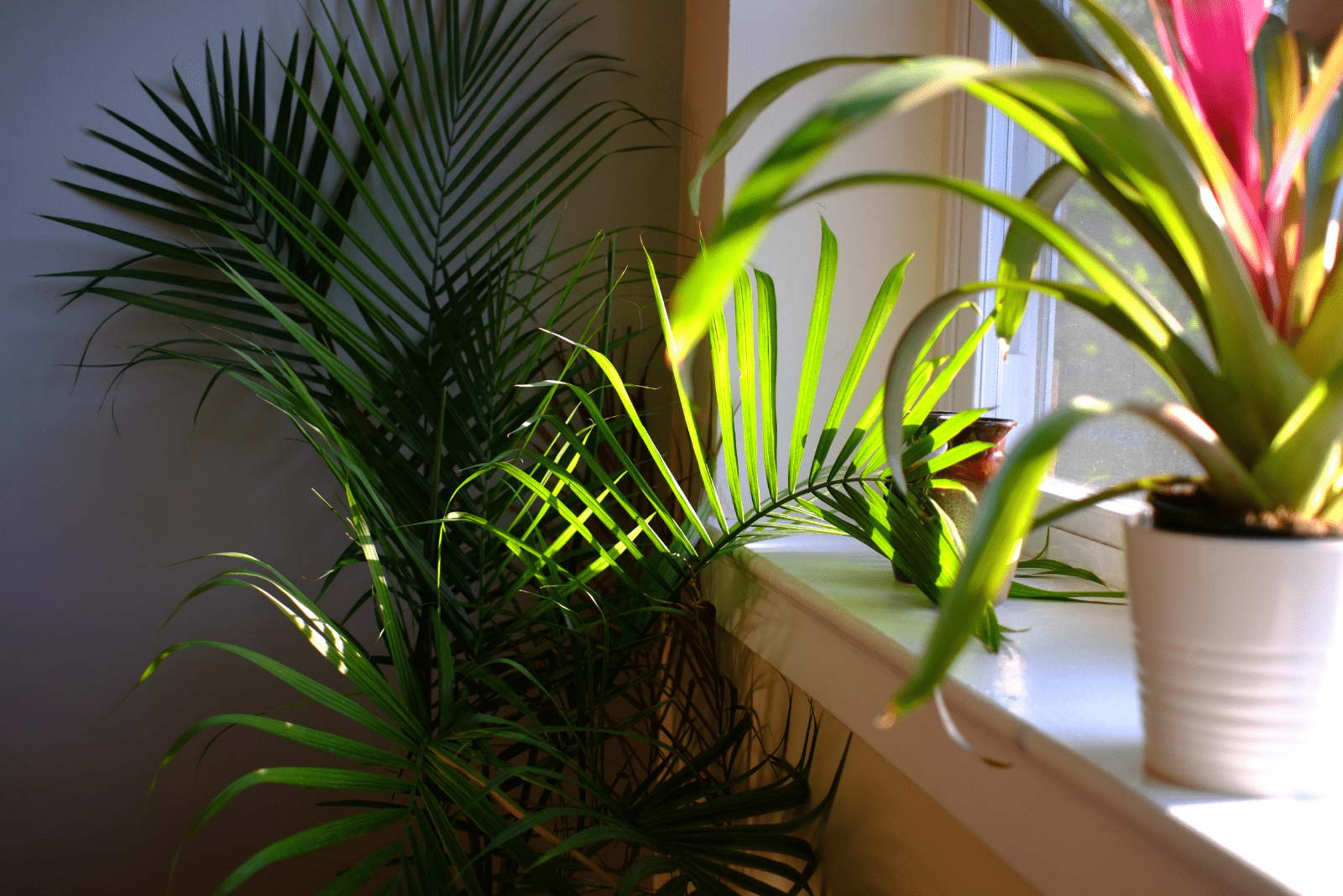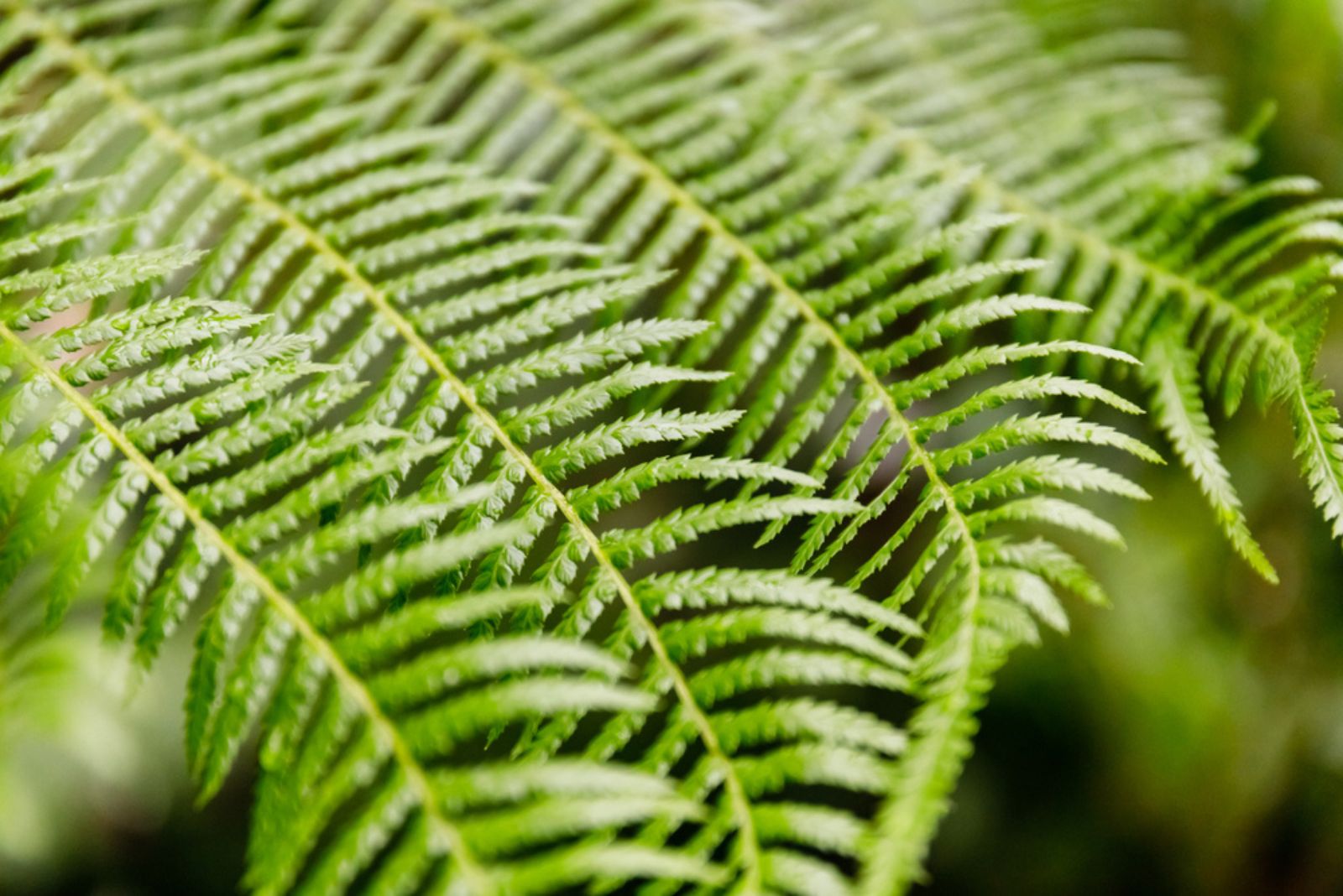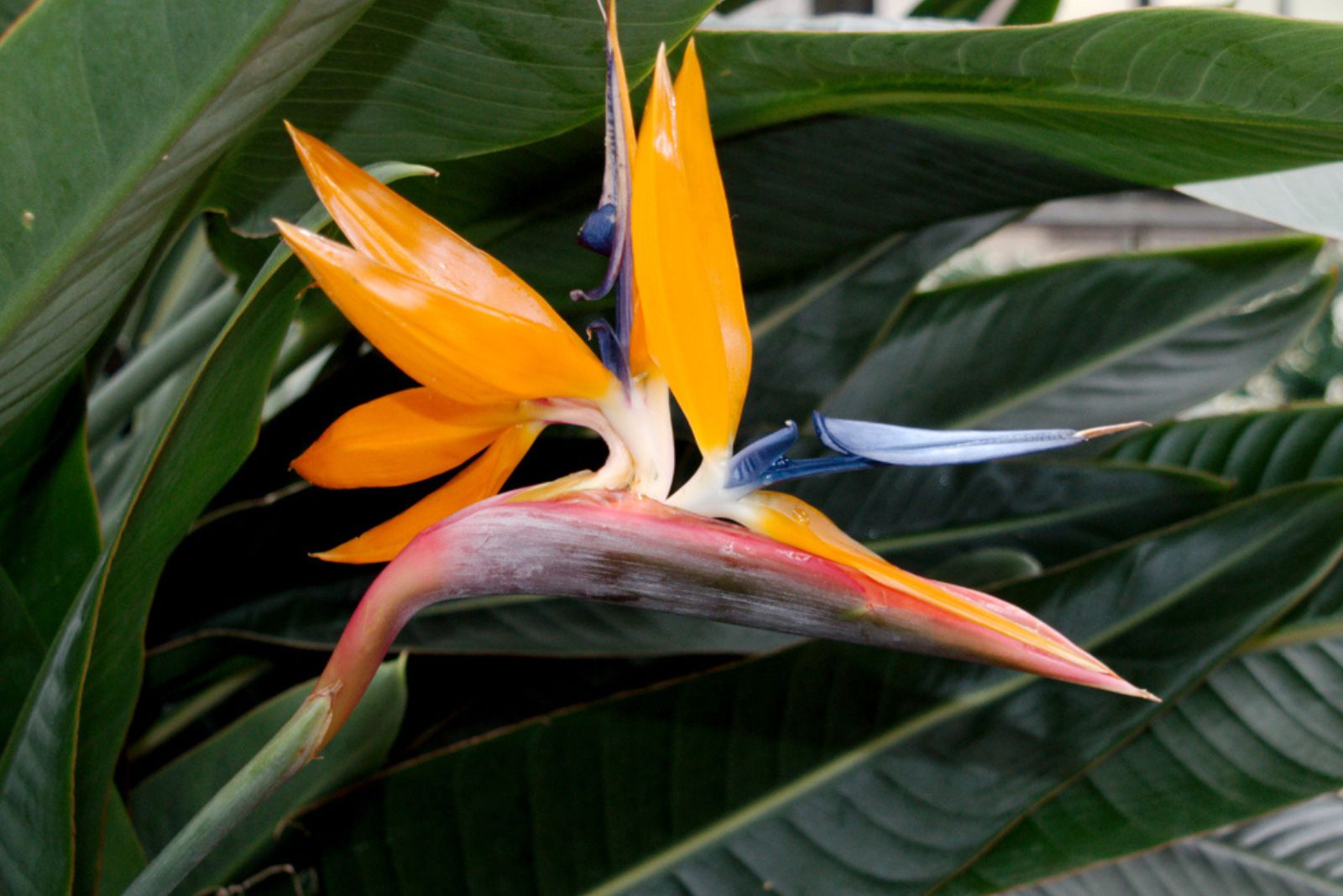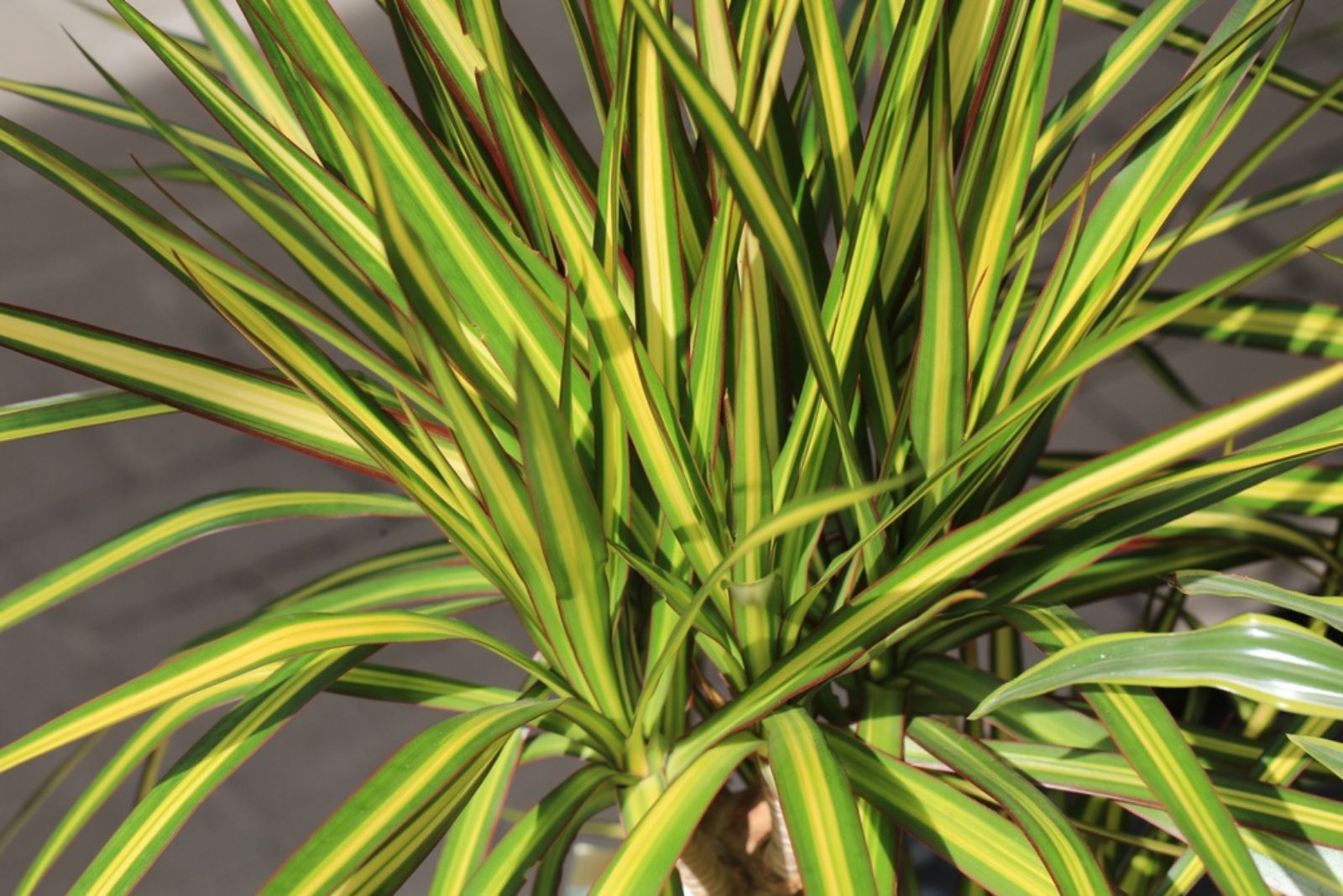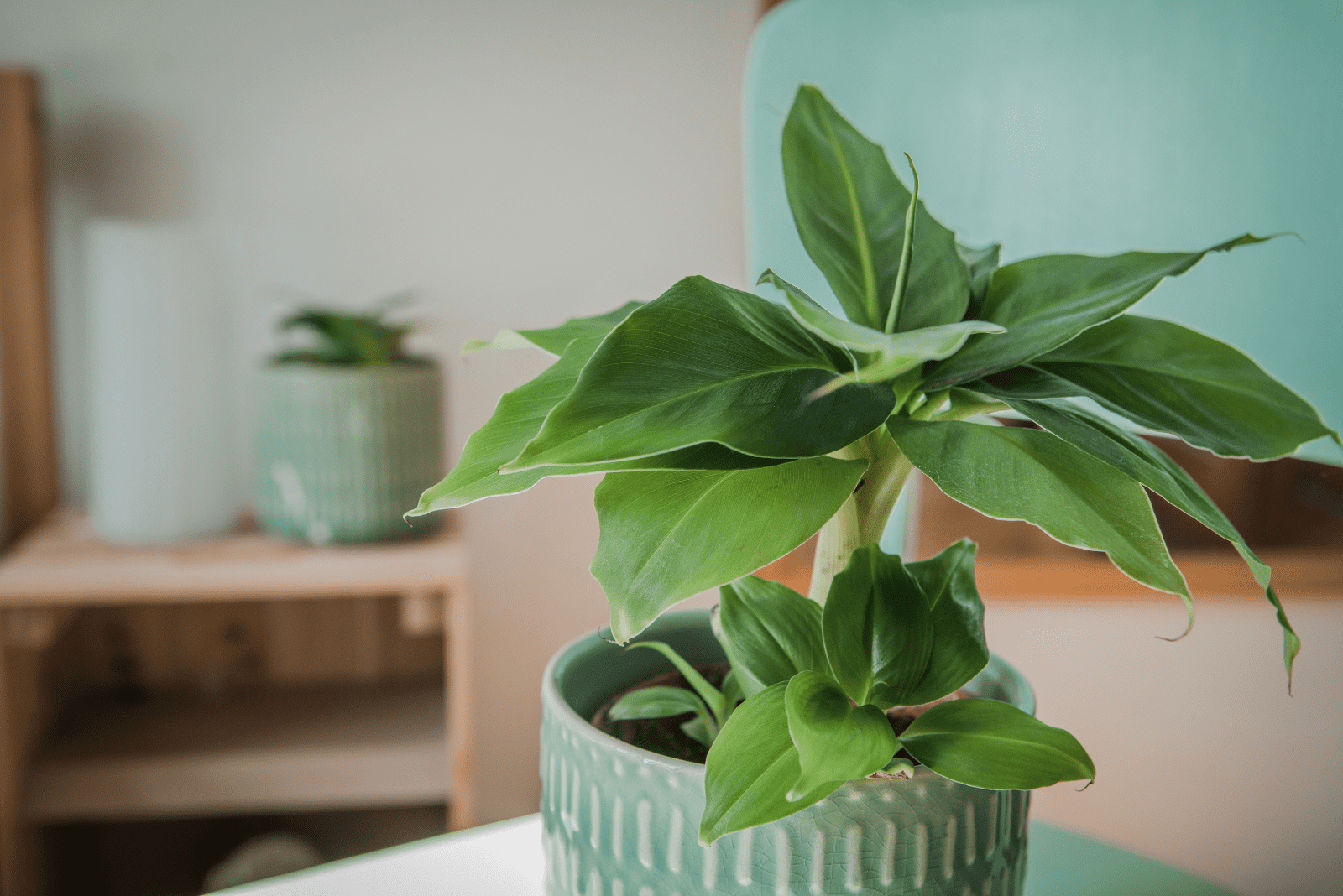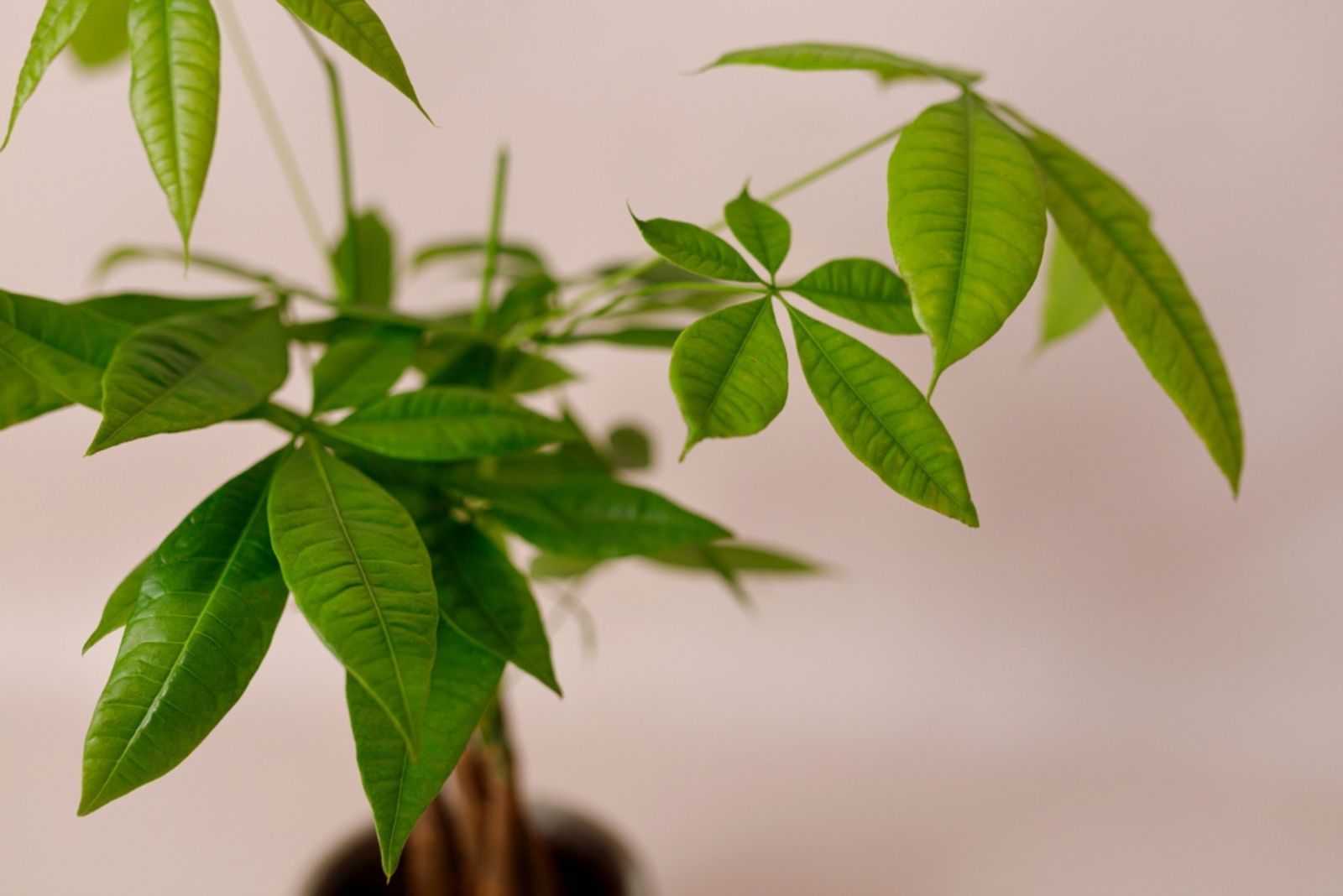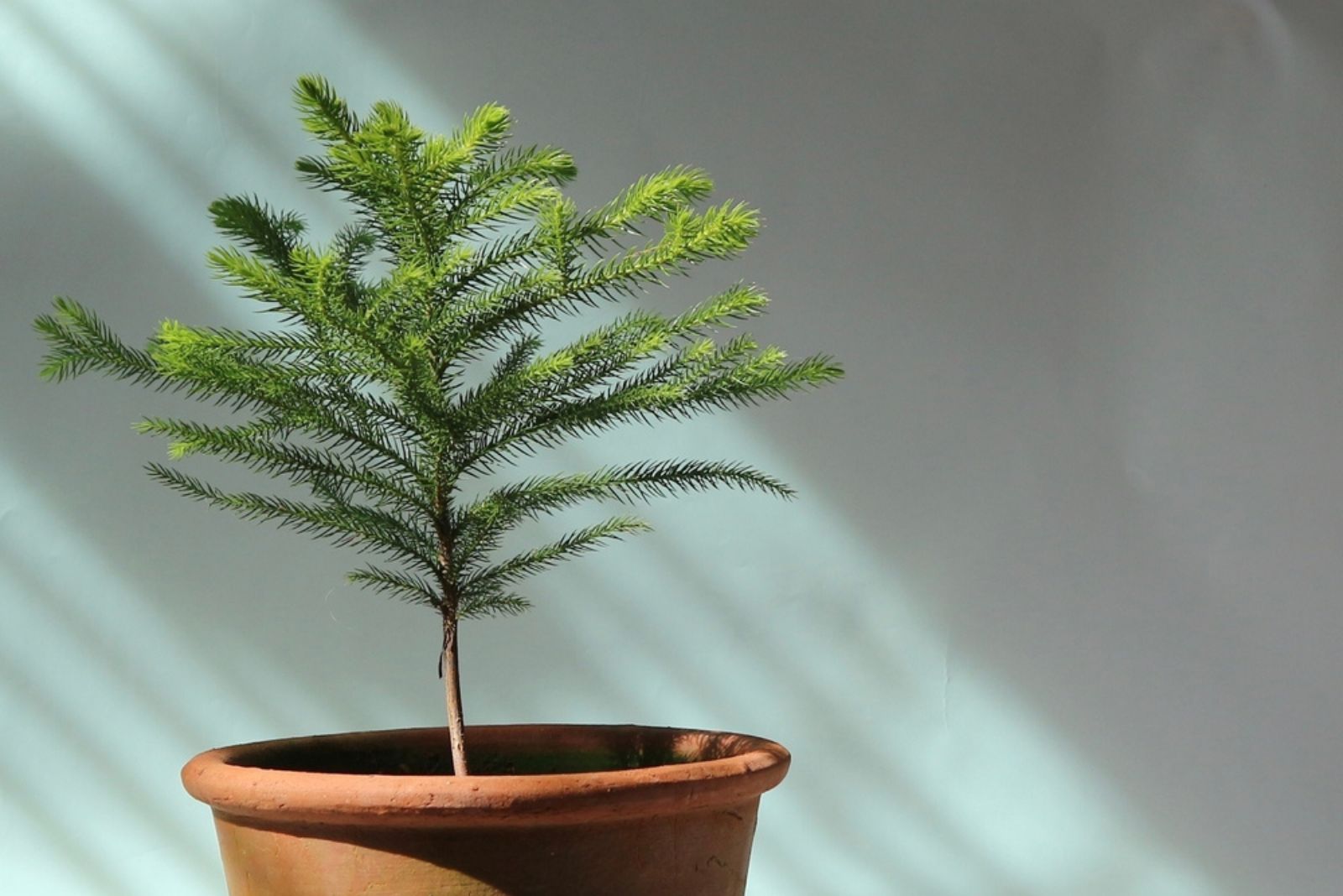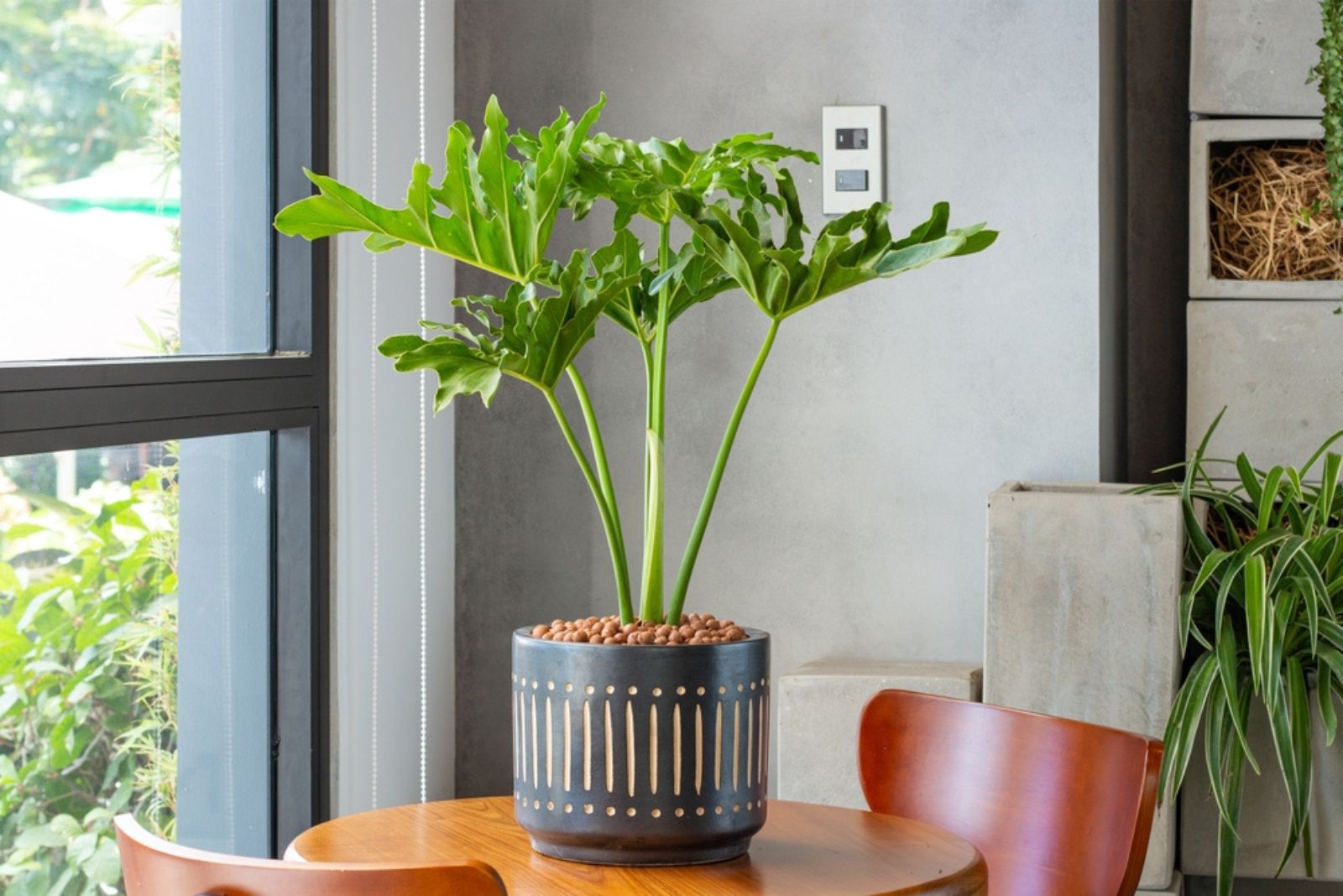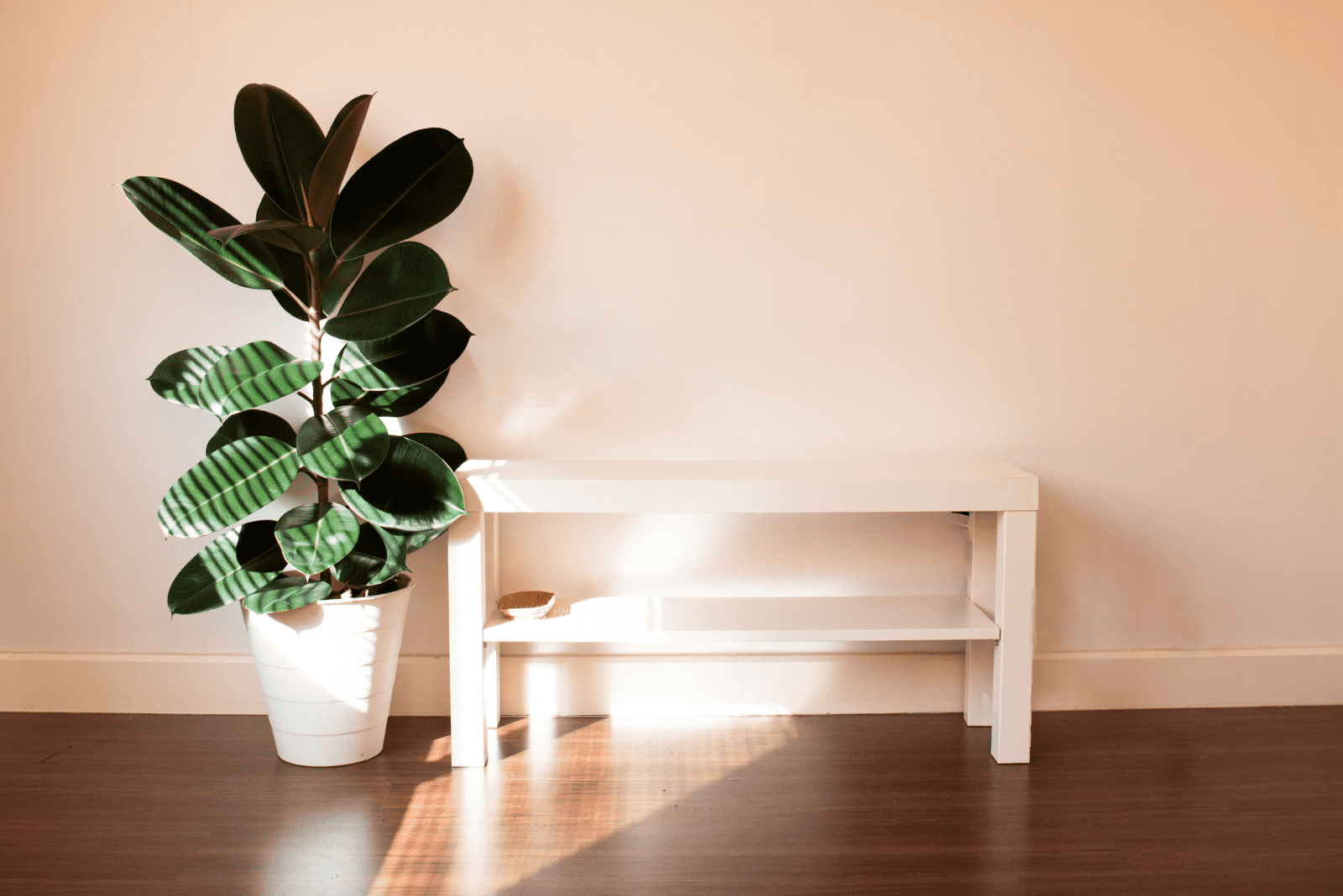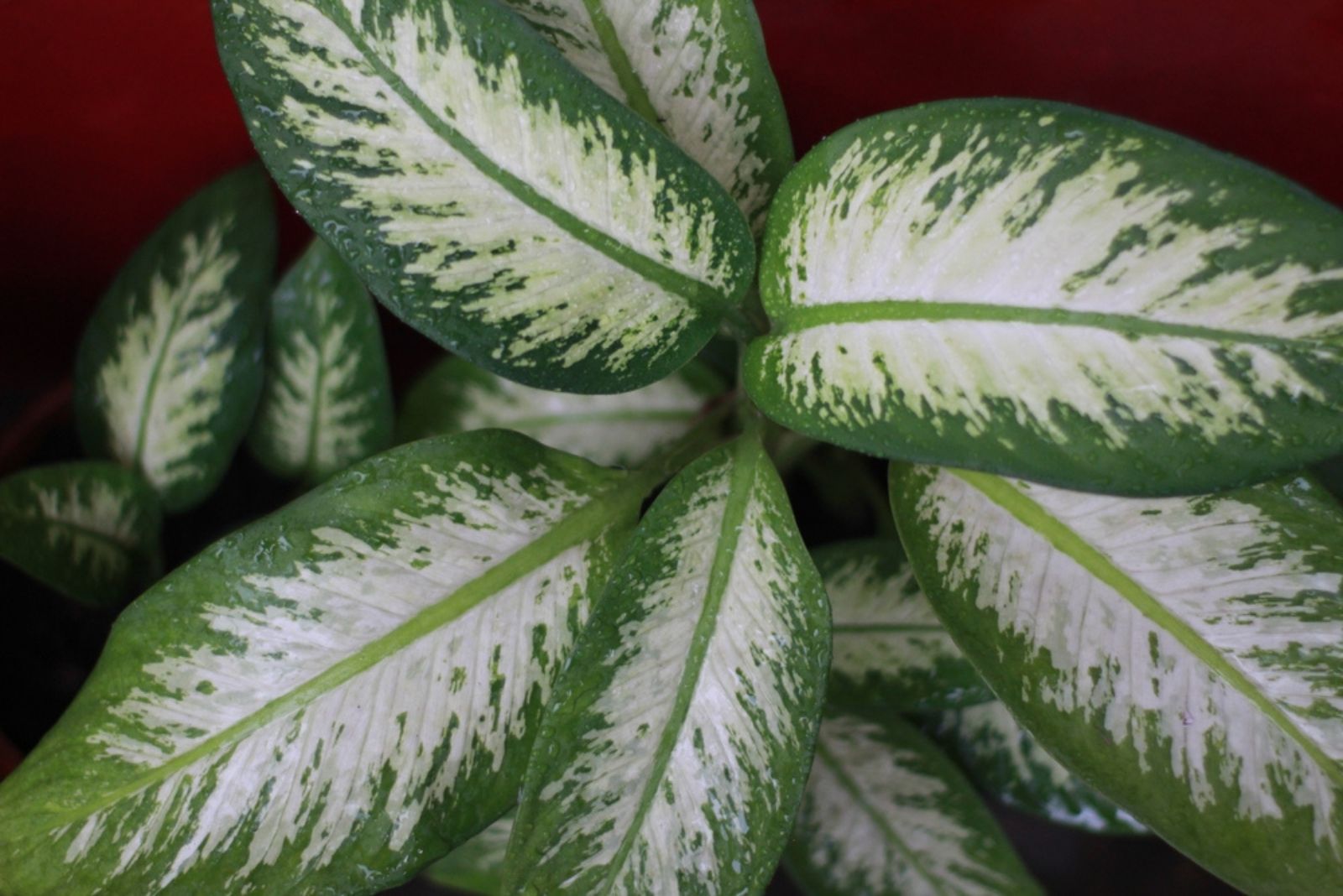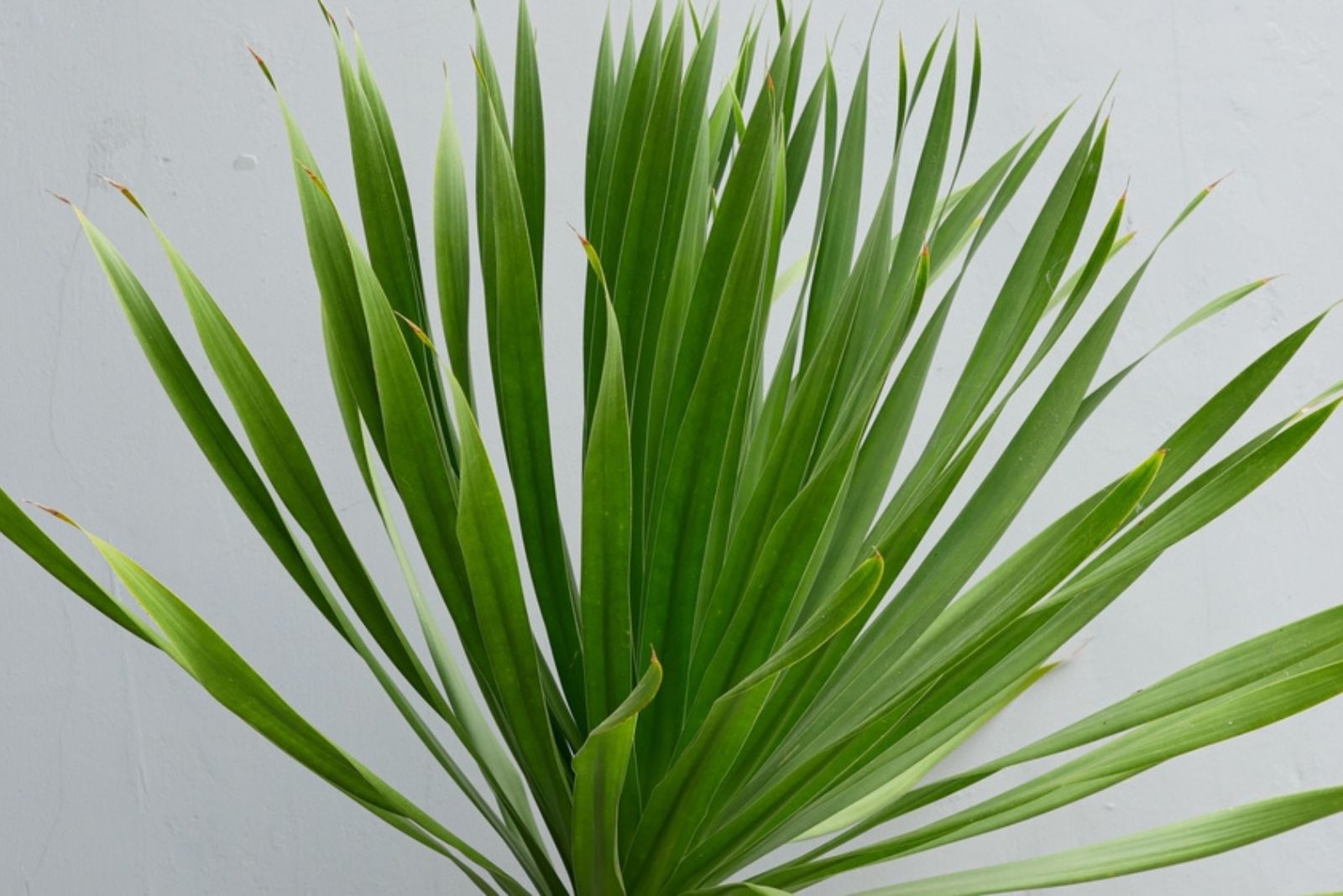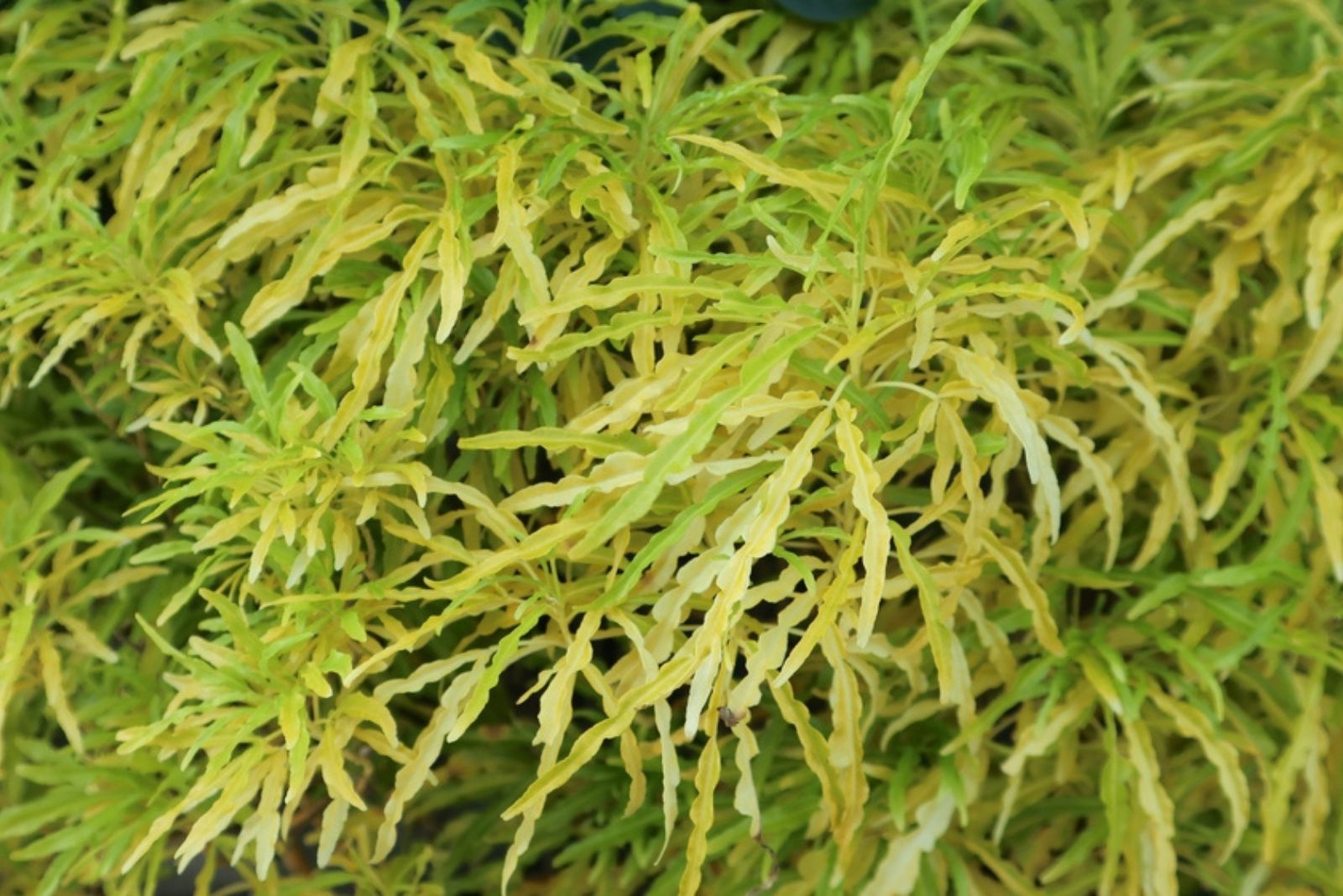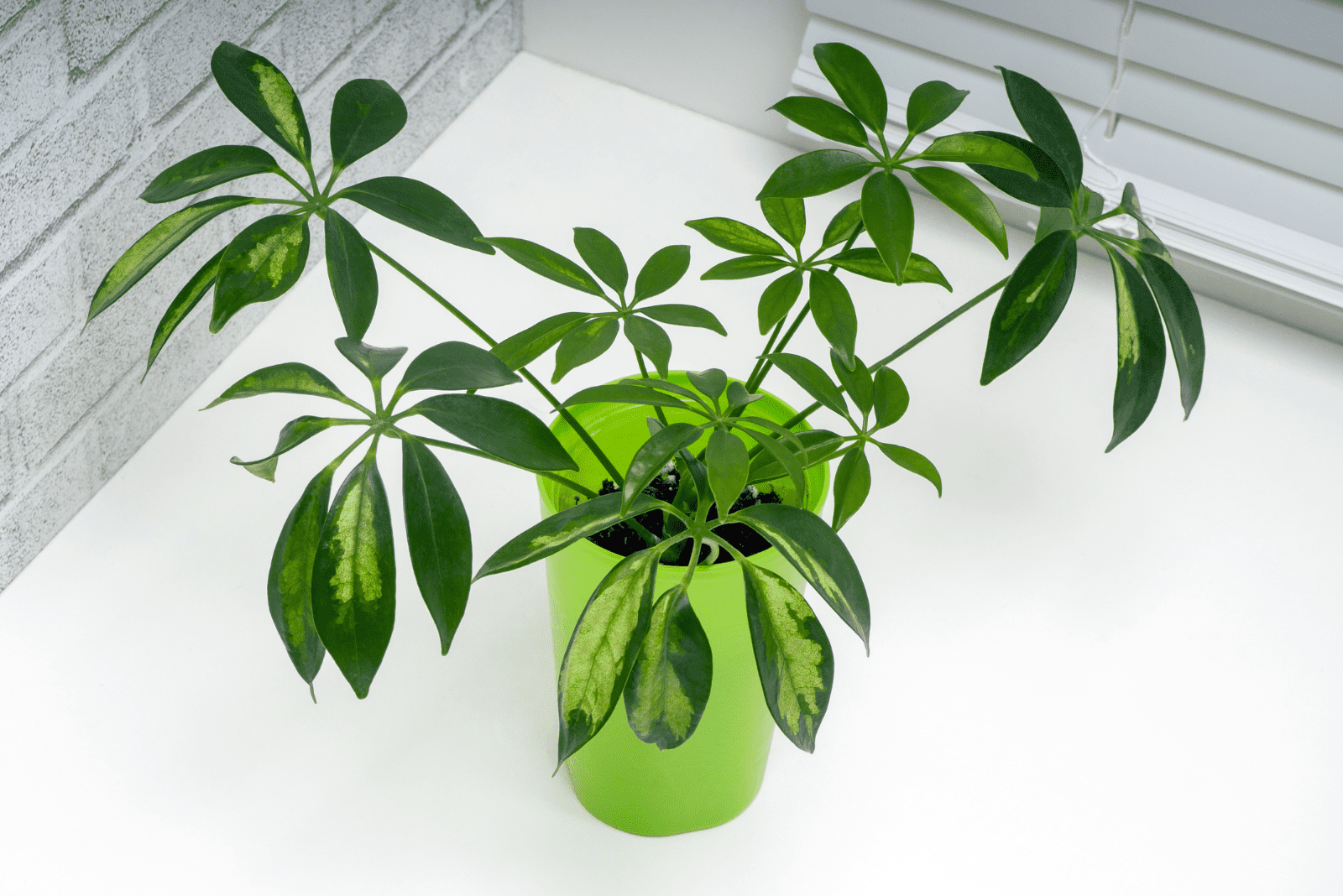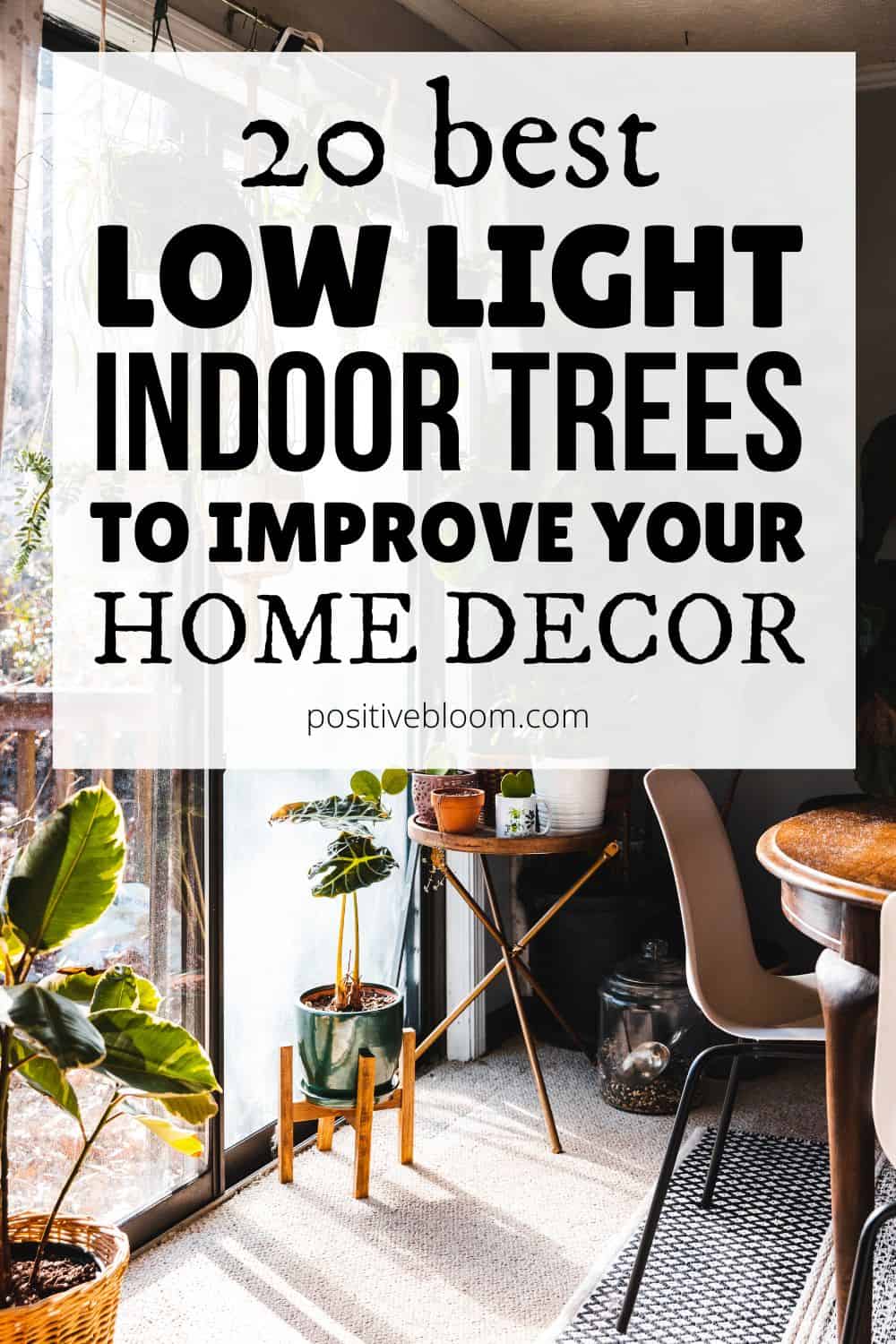Indoor plants have always had a special place in gardeners’ hearts, especially the ones with deep and vivid foliage!
However, there are houseplants that we frequently overlook because we deem them to be too bulky: trees.
And no, you don’t have to grow an oak, birch, or pine in your living room! There are some compact trees, such as indoor palms, ficuses, and yuccas, that will fit in your house perfectly.
However, some of them have another superpower: they can tolerate low-light conditions! Of course, some of these plants cannot thrive if there’s not enough sunlight, but they can manage just fine.
So, let’s look at some of these trees, and who knows, perhaps you’ll even find one to fall in love with!
20 Low Light Indoor Trees
Trees that can tolerate or even thrive in low light levels are perfect companions for your low-light hanging houseplants, such as pothos, monstera, and some ferns.
Let’s first discuss what low light actually is! It doesn’t mean that your plants love the dark, it simply implies that they prefer indirect light and that direct sun can burn their foliage.
Therefore, low-light plants are the plants that prefer to be a few feet away from bright, west-facing windows.
Below, you will find all sorts of trees that will remain green year-round, even in darker corners of your living room.
1. Corn Plant (Dracaena Fragrans ‘Janet Craig’)
This plant’s corn-like, glossy green leaves make it suitable for any modern design. However, most growers prefer the variegated variety because the yellow stripe down the middle (or along the edges) really accentuates the beauty of the foliage.
The corn plant doesn’t require much care: keep it in indirect sunlight, water it whenever the top inch of the soil dries out, and plant it in a loamy, well-draining growing medium.
If you want to ensure the best growing conditions for this tropical tree, ensure that the humidity levels are at least 40-50% (a simple humidifier can help you with this!).
You don’t have to feed this plant, but if you want to boost its growth rate you can fertilize it once a month during spring and summer with well-balanced plant food.
2. Weeping Fig (Ficus Benjamina)
The narrow, oval foliage of this fig tree, in addition to its shrubby appearance, makes it a perfect decoration.
However, it cannot tolerate low light or the cold, as well as some other ficus trees, so it’s not the best plant for beginners. That only means you’ll have to find a perfect spot for it and monitor it a bit more frequently than your other plants.
The best place for this plant would be near an east-facing window, but you can always keep it a few feet away from western windows.
This plant also requires fast-draining soil, high humidity (50-70%), and water only when the medium begins to dry.
For the best results, feed it with a balanced, slow-release fertilizer throughout its growing season.
3. Fiddle Leaf Fig (Ficus Lyrata)
This plant’s large dark green leaves form a beautiful canopy above the trunk, but they can be overwhelming, especially in smaller spaces. This plant is ideal for spacious rooms where it can truly shine.
Many fiddle leaf fig issues, such as yellow leaves, black patches, brown spots, and droopiness, are caused by inadequate irrigation (under or overwatering) and the wrong location.
This plant cannot tolerate direct sunlight, especially during midday and afternoon hours, so keep it a few feet away from west-facing windows.
This plant can tolerate some lower light levels, but it looks its best in bright indirect light.
Plant this fast-growing tree in a well-draining medium, irrigate it only when the soil begins to dry and increase the humidity levels to 50%.
This fig tree is not a heavy feeder, so you won’t have to fertilize it that often. Liquid fertilizer with a 3-2-1 NPK ratio once or twice a month is more than enough, just remember to dilute it, so you don’t burn your plant’s roots.
4. Lady Palm (Rhapis Excelsa)
This slow-growing palm tree has amazing-looking, dark green fronds that are the perfect addition to your indoor jungle!
This is a true low-maintenance palm tree as you only need to worry about watering. Even though it does prefer higher humidity environments, it can tolerate drier conditions as long as you water it whenever the topsoil begins to dry.
You won’t have to worry about lighting because this plant can handle low light quite well (although it will grow faster in bright indirect light).
It requires loamy soil with good drainage, and you only need to fertilize it once a month with a diluted houseplant fertilizer.
5. Kentia Palm (Howea Forsteriana)
Feather-like, green fronds are just a part of the allure this plant has to offer. Its bright green and skinny trunk changes its color as it grows older and becomes more and more brown.
Let’s talk about how easy it is to grow this plant! Plant it in a potting mix for palm trees, water it once the topsoil dries out, and mist it from time to time to raise humidity levels.
It can thrive in low light conditions, but if you only have free space near a west-facing window, you can always draw the curtain to reduce the sunlight.
6. Areca Palm (Dypsis Lutescens)
The feathery fronds of the areca palm (also known as the bamboo palm) are a great way to add more greenery to your home, and its silvery-green trunk, which later takes on a yellowish hue, is just icing on the cake!
The light requirements of this tree are really modest, and it will tolerate low light without much resentment.
It doesn’t require a lot of water, but you should still irrigate it at least once a week during its growing season and every other week once it enters dormancy.
Plant it in a loose and porous medium, or order a ready-made palm tree potting mix on Amazon.
Keep the relative humidity between 40-60% (which you can achieve by misting or using a humidifier), and fertilize the areca palm with a regular houseplant or palm tree slow-release fertilizer three times a year.
7. Parlor Palm (Chamaedorea Elegans)
Green fronds, slender stems, and bushy growth make this plant suitable for different interior designs. Furthermore, this tropical plant doesn’t require much care, so it’s perfect for beginners.
It can tolerate shade as well as indirect sunlight, requires loose and well-draining soil, and needs to be watered every other week, depending on how quickly the medium dries out.
The Parlor palm tolerates average household humidity, and you’ll only need to feed it once a month with a general houseplant fertilizer.
8. Majesty Palm (Ravenea Rivularis)
This large palm and its messy fronds add casual chic to modern decor and can give you tropical vibes in your living room.
It can tolerate low-light conditions, so growing it in indirect indoor light won’t be an issue. However, it does prefer brighter light levels.
The Majesty palm also loves well-draining and moist soil, but you should always let it dry out a bit between waterings, and the humidity levels should be above 50%.
Majesty palm fertilizer requirements are pretty modest; simply feed it once a month with a nitrogen-rich liquid fertilizer like 8-2-12 diluted to half-strength.
9. Soft Tree Fern (Dicksonia Antarctica)
The dark green fronds of the soft fern tree can get quite tall and wide, but they will fit your home perfectly with a little bit of pruning. This plant never ceases to amaze because its stems can grow multiple heads and even be curved.
It thrives in low light levels and moist soils, but you should always wait until the medium dries a bit before irrigating it.
The potting substrate should also be loamy and rich in organic content and nutrients so as to provide proper aeration and essential minerals.
The soft tree fern prefers higher humidity, but you can quickly raise household air moisture by turning on a humidifier.
Finally, you can feed this plant with a well-balanced, slow-release fertilizer in spring if necessary.
10. Bird Of Paradise (Strelitzia Reginae)
The clumps of silvery-green, blue-green, or dark green foliage on this tree are incredible. Still, the main attraction are definitely the flowers: orange sepals arranged in a fan are rimmed with blue petals soaring from a deep green spathe.
This plant thrives best in bright light, including direct sunlight, but it can tolerate low-light conditions to a certain degree.
The bird of paradise needs to be watered about once a week, but if you grow it in low light, it may take more time for the soil to start drying out. Therefore, always check the topsoil before irrigating this unique tree.
Plant it in an aerated and well-draining potting mix, and ensure that the humidity levels are high (at least above 50%).
Finally, feed it with a well-balanced water-soluble fertilizer every other month during the growing season, but make sure to dilute it to at least half-strength.
11. Madagascar Dragon Tree (Dracaena Marginata)
The long, narrow, and pointy leaves of this tree are clumped together and look like airy balls on slender trunks. The foliage is variegated, and it’s usually dark green and streaked with purplish-red lines.
This plant can grow well in both low and bright light conditions, so you won’t have to think too much about where you can place it.
The Madagascar dragon tree can tolerate drought and won’t die if you forget to irrigate it once or twice. However, underwatering can cause a lot of stress to your plants, so remember to water once the top few inches of the soil are dry.
One of the things that many growers love about this tree is that it can tolerate the average air moisture in your home. However, it does thrive in higher humidity, so just spray it a few times a week.
This Dracaena prefers a loamy and well-draining growing medium, and it doesn’t need too much fertilizer because it’s slow-growing. However, you can feed it a couple of times throughout its growing season with a balanced fertilizer diluted to half-strength.
12. Dwarf Banana Tree (Musa Acuminata)
The dwarf banana tree is actually a common indoor plant, but it cannot produce fruit unless grown outdoors. However, you can still admire its giant foliage that is purplish when young, but then turns bright green.
This plant can tolerate low-light conditions as it won’t affect fruit production (because there isn’t any indoors).
Water it when the top few inches of the potting medium are dry, and provide it with a high humidity environment (at least above 50%).
Plant it in loamy, well-draining, and aerated soil, and feed it with 8-10-10 fertilizer once a month. Always follow the instructions on the package.
13. Money Tree (Pachira Aquatica)
The glossy green leaves of this plant are more than any home decor could ask for, but it’s the trunk that catches the eye. There is a (relatively) easy way to braid a money tree and turn it into the main attraction in your house!
Let’s learn more about its basic requirements.
The money tree flourishes in bright indirect sunlight, but it can do quite well in lower light conditions too.
Remember to water this plant every 1-2 weeks, and always allow the medium to dry out between irrigations.
The money tree also requires higher humidity levels (at least 50%), so you should get a humidifier or spray this plant occasionally.
Plant it in well-draining soil enriched with sand and peat, and feed it monthly with diluted all-purpose plant food throughout its growing season.
14. Norfolk Island Pine (Araucaria Heterophylla)
If you want a Christmas tree all year long, then the Norfolk island pine is the way to go. This evergreen tree has bright green needles and light brown stems that sometimes turn a yellowish or reddish hue.
It does prefer some direct sunlight, so keeping it near an east-facing window is ideal. However, it can tolerate low and moderate light levels just fine.
The good news is that you don’t have to have a watering schedule when irrigating this tree – simply check the top few inches of the growing medium, and if they are dry, you can water your Norfolk island pine.
You should also raise the indoor air moisture levels to about 50% because low humidity can cause the browning of the needles.
Plant this Norfolk pine in a well-draining and slightly acidic soil that contains peat moss and sand, and feed it with a well-balanced fertilizer twice a month during the growing season.
15. Tree Philodendron (Thaumatophyllum Bipinnatifidum)
We’re not used to picturing philodendrons as trees and see them more as climbing plants, but there are tree-like variants.
Nevertheless, the dark or bright green serrated leaves have a lot to offer to many different designs.
This specific variety can thrive in low-light levels, and you’ll only need to water it once the topsoil dries out (which will be more frequent in summer during its growing season than in winter).
Grow it in a humid environment, plant it in well-draining soil, and fertilize it once a month during its growing period.
16. Rubber Plant (Ficus Elastica)
The rubber plant has succulent-like foliage, which is usually dark green, but nowadays, burgundy and variegated rubber tree varieties are becoming more and more popular. Creamy, pink, yellow, or white splashes of color can add so much to the design!
This ficus can flourish in bright or low light levels, and you only need to protect it from the harsh afternoon sun.
Watering is equally easy; just wait until the topsoil dries out and irrigate it then. You also don’t need to do anything special about humidity because this plant can thrive in lower air moisture levels, but it does prefer relative humidity to be around 40-50%.
Plant it in a high-quality soil mix with good drainage and aeration, and feed it with a general-purpose liquid fertilizer once a month or a slow-release plant food every 3-6 months, depending on the fertilizer.
17. Dieffenbachia ‘Tropic Snow’ (Dieffenbachia Amoena)
Green leaves streaked with creamy variegations are everything a home needs, and this plant can offer just that!
All you need to do is keep it indirect light, although it doesn’t mind being placed in shadier parts of your home.
Irrigate it once the topsoil dries out, and ensure that the humidity levels are about 60% for optimal growth.
Plant it in a rich, well-draining, peat-based potting medium, and feed it with a houseplant fertilizer diluted to half-strength once a month.
18. Spineless Yucca (Yucca Elephantipes)
This tall and narrow succulent shrub can decorate your home with pointy and delicate green foliage that clumps at the very top.
It thrives in sunny locations, although it can tolerate lower light levels. However, you should be careful because its leaves can turn brown, and it can become leggy if left in the dark.
You can water it once the topsoil dries out, which is usually about once a week during its growing period, and every 2-3 weeks during dormancy.
This is a low-maintenance plant that doesn’t need high humidity; simply plant it in loose and sandy soil, and that’s it!
You don’t even have to fertilize it! However, if you notice that your yucca could benefit from some extra food, you can fertilize it with a slow-release cactus plant food.
19. False Aralia (Schefflera Elegantissima)
The false aralia is a tree that belongs to the list of plants with spiky leaves and whose bronze, young foliage may take your breath away. But as they grow older, the leaves take on green or even black hues that constantly give your home a novel appearance.
It grows just fine in lower-light conditions, but if you want to speed up its growth rate, you should move it to a brighter spot.
Wait until the top few inches of the soil are dry before irrigating it, and mist it occasionally to meet its humidity requirements.
Plant it in a well-draining, peat-based potting mix, and fertilize it with liquid houseplant food throughout the spring and summer, following the instructions on the package.
20. Umbrella Tree (Schefflera Actinophylla)
The last tree suitable for low-light levels that we’ll examine in this article is the umbrella tree. Its shiny green leaves spread from the center in an umbrella-like shape, hence the name.
You can even choose between pure green or variegated leaves, depending on your preferences.
The umbrella tree thrives in bright indirect light levels but can also tolerate lower light (although it will grow more slowly).
When it comes to moisture, you should wait until the topsoil dries out before irrigating it, and you should either mist it regularly or invest in a good humidifier. This plant loves air moisture and thrives when relative humidity is about 75%.
Finally, plant it in a fast-draining, sandy medium. This plant doesn’t require fertilizer if you repot it once a year, but if you want to speed up its growth rate, you can feed it once a month during its growing season with a regular houseplant fertilizer diluted to half-strength.
Wrapping Up
This article discussed twenty breathtaking low light indoor trees you can use to decorate your living room, library, or any other place you enjoy relaxing.
We discussed their general appearance and included some tips for growing them so that you can decide whether that particular tree is the right fit for you.
Some of the plants from the list are more demanding than others, but if you really want them to adorn your home, go for it!
You won’t make a mistake with any of the plants from the list!
Enjoy your green home, and until next time!
Like this post? Share or pin it for later!

